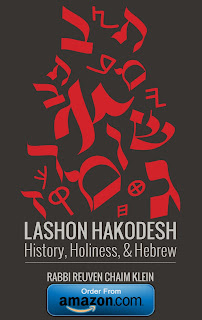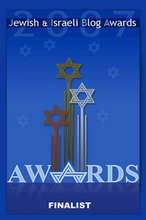Even though the Mishnah explains[1] that one who wishes to become wise should engage in the study of monetary laws, the Talmud only says that Seder Kodshim is considered "wisdom"[2], not any other Seder of the Oral Torah. Rabbi Yisroel Meir Kagan (1838-1933) laments[3] the fact that Seder Kodshim is an often-neglected component in the study of Torah. Rabbi Kagan explains[4] that while learning monetary laws grants one wisdom, that wisdom is only of human behavior and intellect. On the other hand, the study of Kodshim contains a wisdom unlike any other human wisdom, for it is the wisdom of HaShem Himself. Kodshim is built purely on the foundations of the Torah, and the insights therein reveal super-human knowledge contained in the Torah, which is only apparent through the study of Kodshim. The Midrash tells[5] that Seder Kodshim enlightens one's eyes[6]. Indeed, elsewhere, the Midrash says[7] that during the Six Day of Creation HaShem created light and saw that the "light was good"[8], He was referring to the book of Leviticus, upon which most of Seder Kodshim is based. This is why Rabbi Kagan entitled his pamphlet which stressed the importance of Kodshim, "Torah Ohr", "The Light of Torah". Just as light is essential to the physical world, the Talmud says[9] that without the study of the sacrifices, the Heavens and Earth would cease to exist.
Rabbi Kagan proves[10] that the Order of Kodshim played a more significant role in the past, even though it is presently largely neglected. Rashi[11] explains that in Amoraic times, the orders of Moed, Nashim, and Nezikin were studied in the Yeshivas because they were practically relevant, while Kodshim, which was not practical relevant, was studied purely for the sake of Torah study. Rabbi Kagan expresses his astonishment that many spend their time studying the tractates of Sanhedrin and Makkos, which detail the judiciary proceedings of Beis Din, and the tractate of Yevamos, which details the laws of the levirate marriage, even though those tractates are currently not relevant, but they do not spend their time learning the tractates of Seder Kodshim, whose contents are not practical applicable yet either.
The Talmud says[12] that one who busies himself with the laws of the Olah sacrifice is considered to have brought an Olah. One who busies himself with the laws of the Chatas sacrifice is considered to have brought a Chatas sacrifice. Rabbi Kagan explains[13] that this is not only true in regard to the Korban Chatas and Korban Olah, rather the Talmud's statement is true in regard to all the sacrifices offered on the altar of the Holy Temple in Jerusalem. Similarly, the Midrash says[14] that even when the Temple does not exist, studying the physical structure of the Holy Temple and the sacrifices brought there is tantamount to building the Temple and offering the sacrifices. Furthermore, Rabi Kagan[15] explains that the Talmud does not say that one should merely "read" the descriptions of sacrifices, the Talmud says that one should be involved in its study. One should engage in an in-depth Iyun analysis of the laws of the sacrifices that were brought in the Holy Temple. Only then is one considered to have offered the sacrifices about which he has learned. Rabbi Kagan says[16] that when one prays for the rebuilding of the Holy Temple[17], "…we shall all be gladdened with the services…" he is a liar unless he happily studies Kodshim, the present-day equivalent to the Temple's services.
At the Covenant Between the Pieces, HaShem told Abraham[18] that He would not only forgive the Jews of their sins if they brought sacrifices in the Holy Temple, but He would even absolve them of their inequities if they learned the laws of the sacrifices, in lieu of actually bringing them, in times when the Holy Temple will not exist. Indeed, the salvation of the Jewish people during the reign of King Ahasuerus came about in the merit of Mordechai studying the laws of the Korban Mincha whilst in the Shushan during the Babylonian Exile. The Talmud says[19] that he was in the midst of showing his students how exactly the Kohen scooped a handful of flour as a preparation for the Mincha offering. From here, one sees that the study of Kodshim has the power to bring about the Ultimate Redemption. Rabbi Kagan goes to great lengths to prove from various sources[20] that the study of Seder Kodshim brings closer the arrival of the Messiah and the rebuilding of the Holy Temple in Jerusalem, speedily and in our days: Amen.
[1] Bava Basra 175b
[2] Shabbos 31a
[3] See his introduction to Likutei Halachos, an Alfasi-style halachik compendium which he authored on Seder Kodshim, as well as Torah Ohr, a book dedicated to describing the importance of learning Seder Kodshim.
[4] Introduction to Torah Ohr
[5] Yalkut Shimoni, Psalms, §674
[6] Psalms 19:9
[7] See Midrash Rabbah to Genesis 1:4
[8] Genesis 1:4
[9] Taanis 27b, see Maharsha there as well
[10] Torah Ohr Chapter 2
[11] To Bava Metzia 114b
[12] Menachos 110a
[13] Torah Ohr, Chapter 1
[14] Midrash Tanchuma, Tzav §14
[15] Introduction to Torah Ohr
[16] Torah Ohr, Chapter 1
[17] See Mussaf liturgy
[18] Megillah 31a
[19] Megillah 16a
[20] See Torah Ohr, Chapter 10


 orcid.org/0000-0001-9317-3282
orcid.org/0000-0001-9317-3282

No comments:
Post a Comment